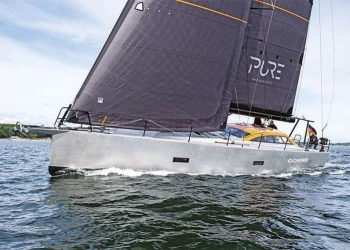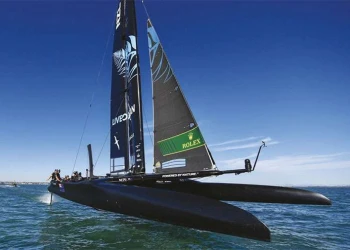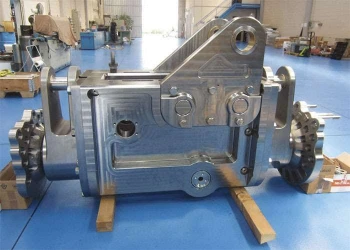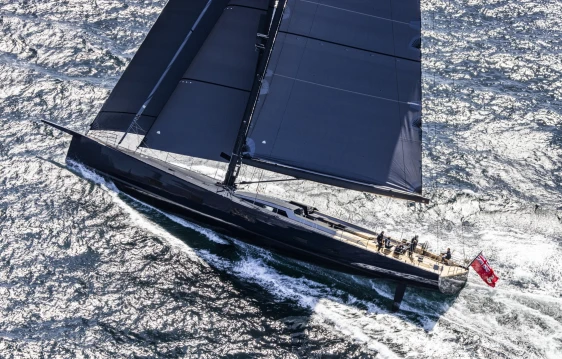
Gelliceaux is the first example of the SW108, a sustainable build that from the outset was conceived and engineered to be a hybrid design.
Southern Wind driving positive change for a sustainable future
Lifecycle assessment was the important first step in Southern Wind’s drive to reduce their carbon footprint. Now they’re making positive changes. Sustainability is moving away from being a fashion or a passion, to being almost business as usual. If we don’t go in this direction we won’t be in business in five or 10 years.’ That, in a nutshell, is why Southern Wind has put a lot of effort into a lifecycle assessment (LCA) project, as the shipyard’s planning and control manager Paul Dumbell explains.
Yacht owners’ interest in sustainability is definitely on the rise, so having accurate data on their boats’ environmental impact isn’t just the right thing for Southern Wind to do, it also makes good business sense. It’s a move that many sailing yacht builders – and yacht racing teams – would like to achieve. Relatively few, thus far, have completed the process and had the results independently audited. That’s because if you do it properly, LCA is a long-term commitment and a lot of work.
For Southern Wind, which builds two large, sophisticated and extensively customised sailing yachts a year, LCA is inherently complex to calculate and there isn’t a template to follow. ‘We have one foot in the raceboat industry where composite structure is the dominant cause of impact and our other foot in the superyacht industry where it’s energy use,’ Dumbell explains.
Starting from scratch, without the resources and budget of a big shipyard or top racing team, the LCA took two and a half years to complete. Dumbell is keen to stress that it’s just the first step on the road to becoming a more sustainable shipyard. But it’s a credit to him that the consultants contracted to do the analysis were impressed with the quality and scope of his data.
The LCA had two main areas of focus. One was the build of SW105-05, Sørvind: logging and weighing all materials and components, including all packaging, while also calculating energy use, quantifying freight transport logistics, tracking recycling and waste, and compiling lifecycle data on every item in the supply chain.
The other focus was a survey of the existing fleet, to establish the average impact of a Southern Wind yacht in four modes of operational use: with charter guests or owners on board; on delivery; at a boatyard for maintenance; and in standby mode tied to the dock. Diesel, energy consumptions and crew flights were all factored in. The LCA assumed a typical service life of 30 years – but this is a very conservative estimate, given that every yacht the shipyard has built in its 32 years of operation is still in use, and none of them are thought to be near their end of life.
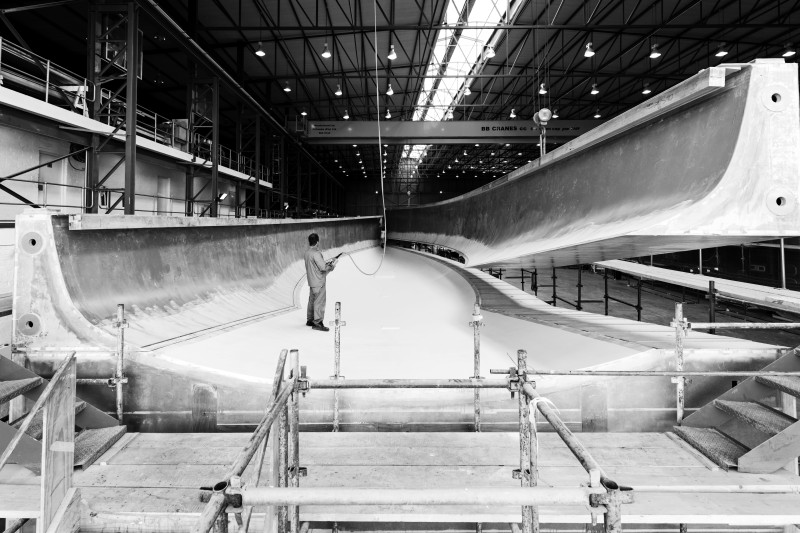
The yard’s hull production technique is a relatively low-waste process using moulds made with timber battens and chipboard. The paper-cored interior panels similarly offer a lower environmental footprint than most suitable alternatives
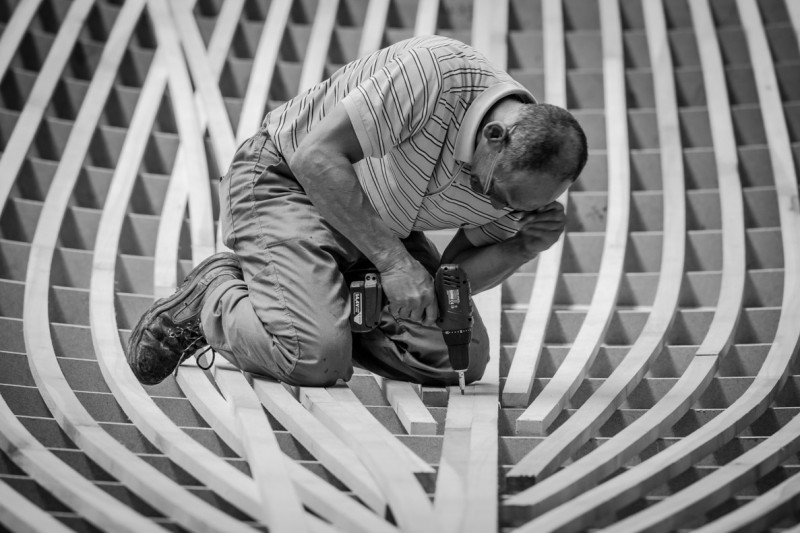
The total cradle-to-grave footprint of SW105-05 was calculated to be just under 7,000 tons of CO2e. It’s tempting to compare that headline figure with established benchmarks – it looks to be equivalent to the footprints of 180 family cars, for example – but Dumbell explains that simple comparisons are likely to be misleading. LCAs are designed to measure an organisation’s impact and find ways to reduce it, not to compare with other organisations, so each LCA is based on a different scope and set of parameters.
Some results were surprising. ‘I expected freight to have a high impact and electricity to be negligible,’ Dumbell says. ‘But freight turned out to be less than expected and the electricity we use in manufacturing is quite significant. That’s because South Africa is mostly powered by conventional energy.’
Materials accounted for 26 per cent of the total footprint and power use during construction was 11 per cent. Energy use over the 30-year operational life of the yacht – mostly diesel consumption – was 63 per cent. Thus the breakdown was roughly a 40:60 split between building a new yacht and running it.
One major reduction in environmental impact has already been achieved. A 300kWp (kilowatt peak) array of solar panels on the roofs of the shipyard significantly reduces its consumption of mains electricity. At weekends, most of the power that the array generates is fed back into the local grid.
Southern Wind’s commercial director Andrea Micheli says it’s important to note the stark difference between the LCAs of sailing yachts and motor yachts. The construction footprint is broadly similar but the footprint of the motor yacht during operational use is massively higher. ‘Even when motoring, a sailing yacht is still far more fuel efficient,’ he says. ‘For a delivery passage of a thousand miles we’re talking about 3,300 litres versus 25,000 litres of fuel for a similar size semi-displacement yacht. The operational carbon footprint of such the motor yacht is seven times higher.’ For an ocean passage, sailing makes an enormous difference. Southern Wind yachts routinely use less than 7,000 litres of fuel on the 7,000-mile delivery trip from Cape Town to the Mediterranean while the same motor yacht would burn about 175,000 (25 times more).
He also points out that if the LCA had been calculated with a 50-year use cycle, (as per a study commissioned by ICOMIA and presented in November 2023 at METS, the Marine Equipment Trade Show), the footprint of operational use would be an even larger proportion of the total.

The true footprint of carbon fibre is complicated. On one hand it’s the main part of the construction footprint. On the other hand, as Micheli explains, the operational footprint would be significantly larger without it. ‘Many yachts that are a similar size are about 10 tons heavier with the same sail area and they need at least 8kts of wind to start sailing,’ he says. ‘Ours sail well in five to six knots.’ The difference might seem small but in a typical Mediterranean season it increases the number of sailing days significantly.
The next phase is using the LCA to reduce the footprint of the shipyard and its yachts. ‘We are going to start active procurement,’ Dumbell says. 'Preference will be given to suppliers who can support with good data a more environmentally suitable product.’ He is also looking at systems integration to tie the LCA database and modelling software into the shipyard’s project management and ERP systems. ‘In the short term 20 to 30 per cent “Cradle to the Gate” reduction is a good target, including the contribution from the solar panels,’ he says. ‘Consistent longer term reductions will require more effort for smaller improvements.’
Both Dumbell and Micheli are clear that there are currently no viable alternatives to using carbon fibre for masts and hull structure that can deliver an equivalent level of performance, nor for lead in keel bulbs. They are, however, looking seriously at replacing non-load bearing carbon composite components, such as internal partitions, with panels made from basalt fibre and recycled PET core materials.
The shipyard is already moving away from teak decks, towards alternatives such as marine maple, Flexiteek and thermally reflective deck paint. The yard’s technical team is also investigating the option of changing the floor bearers inside the boats from carbon to aluminium. Dumbell is looking at sourcing more sustainable bronze components and copper cables, and possibly reducing the amount of copper by using higher-voltage electrical systems. After finding that water-based paint systems can’t match the gloss of a solvent-based paint system, he is now looking at solvent filtration and containment solutions instead.
Micheli is keen to work on scenarios that can deliver a 10 per cent fuel saving in operational use, which would significantly reduce the yachts’ overall footprint. He says focusing on thermal efficiency – air conditioning systems and the way they are used, as well as larger shade awnings, better ventilation and heat-reflective deck coatings – has a potential to reduce fuel consumption that is comparable with diesel-electric hybrid drive systems. Hybrid drive systems are very appealing for their capability to hydrogenerate electricity while sailing (on the SW96 and SW108, it’s 15kW at 12kts).
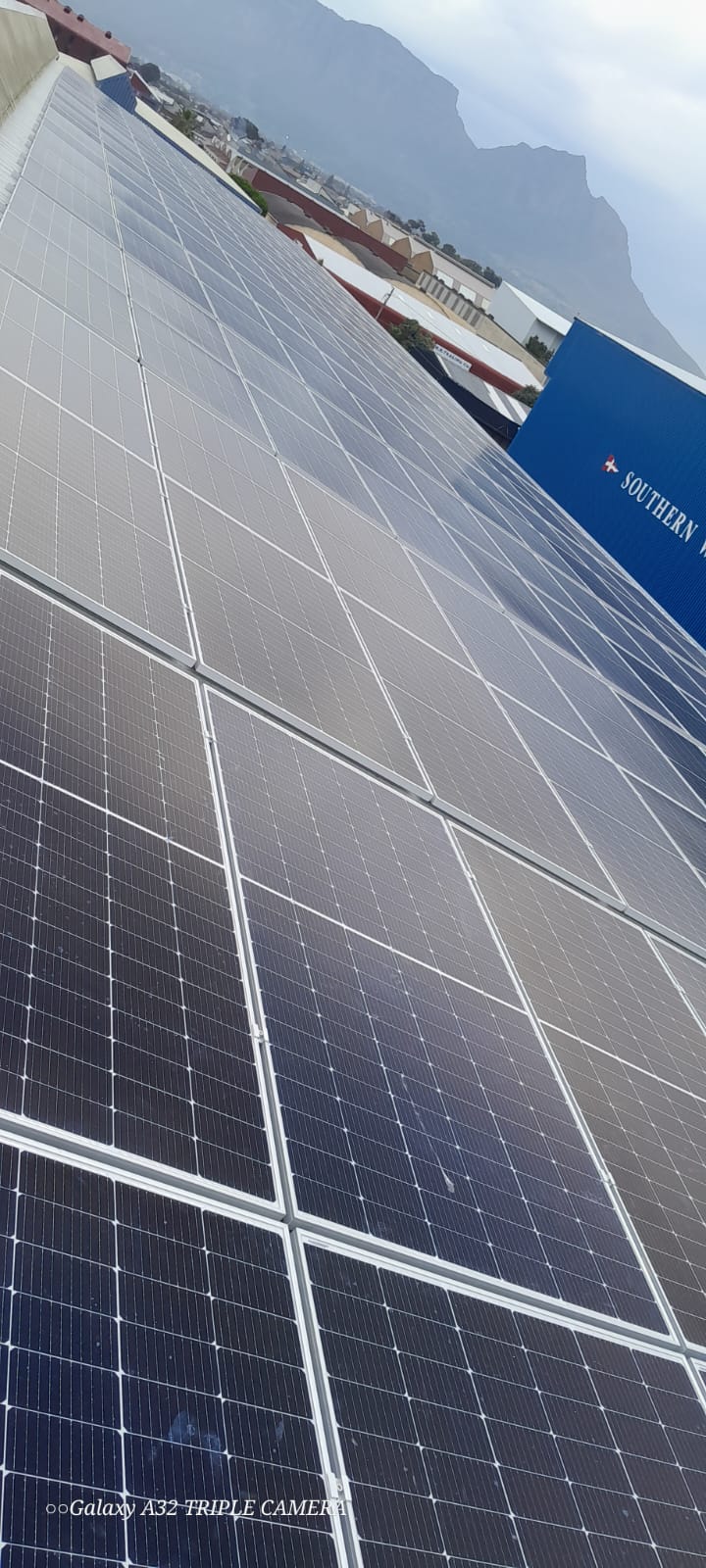
Importantly, the next model in Southern Wind’s range, the 100X, will be more efficient and sustainable by design. It’s a semi-custom yacht, so the production processes will be inherently lower in terms of impact than a smart custom build where the tooling for the deck moulding is often unique and each yacht is extensively, individually customised. Sustainability was a key part of the brief given to Farr Naval Architects, who have been working with the shipyard’s technical manager to design a hull that delivers the excellent performance and handling of a Southern Wind yacht with a slightly higher displacement. This will give more scope for considering sustainable alternatives to many of the materials, components and systems they currently use.
The LCA also offers real value for smart custom and full custom build projects. Any new yacht buyer who cares about environmental impact will now be empowered to make fully informed decisions about options for materials, components and equipment, weighing up sustainability against performance and other considerations such as cost, aesthetics and comfort. And as Dumbell explains, the LCA also provides owners with the necessary data if they choose to support companies specialising in climate change or positive environmental projects, thereby mitigating the impact of the build.
It’s an exciting prospect for forwardthinking owners who want to invest in sustainable innovation.



